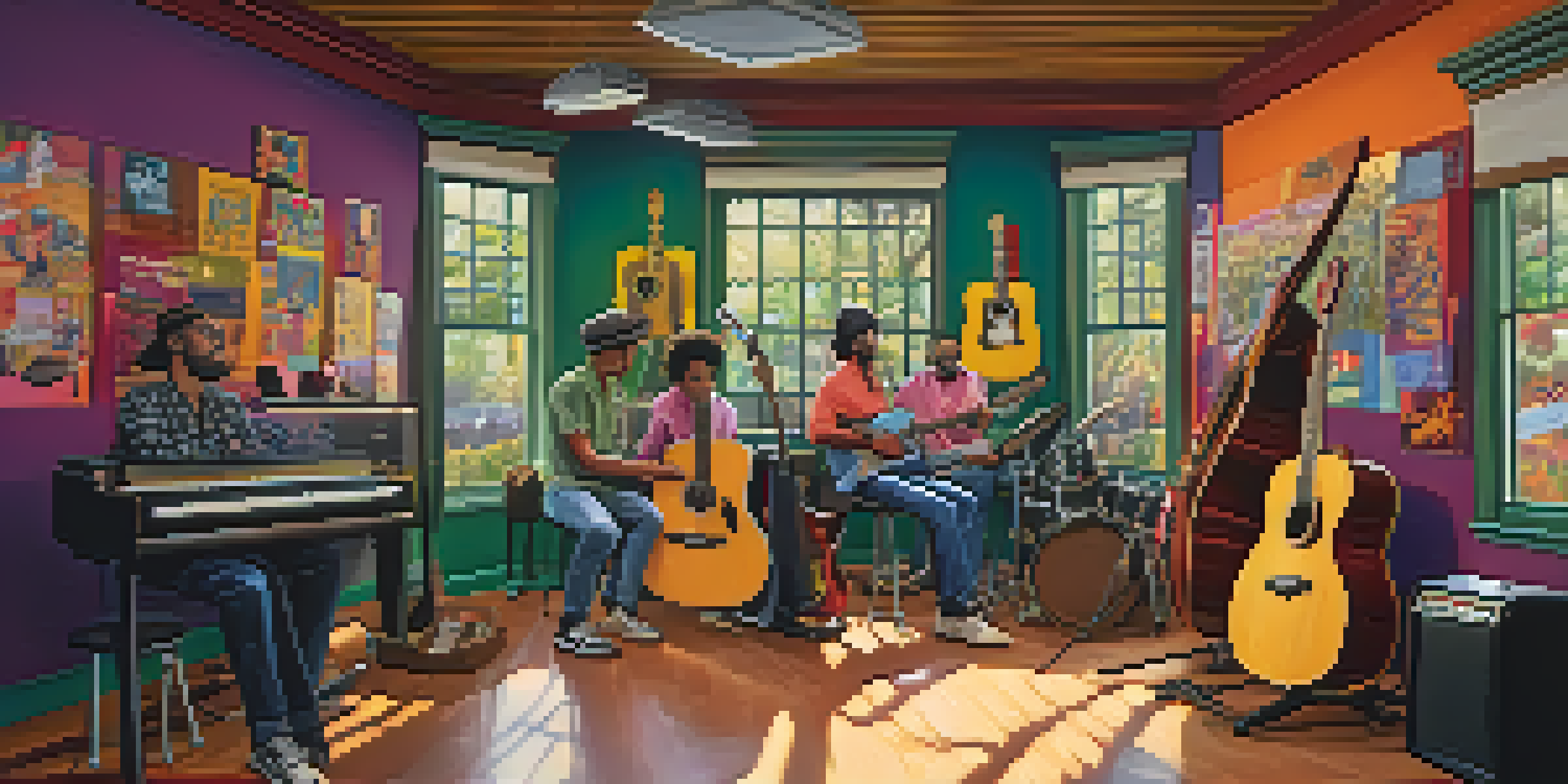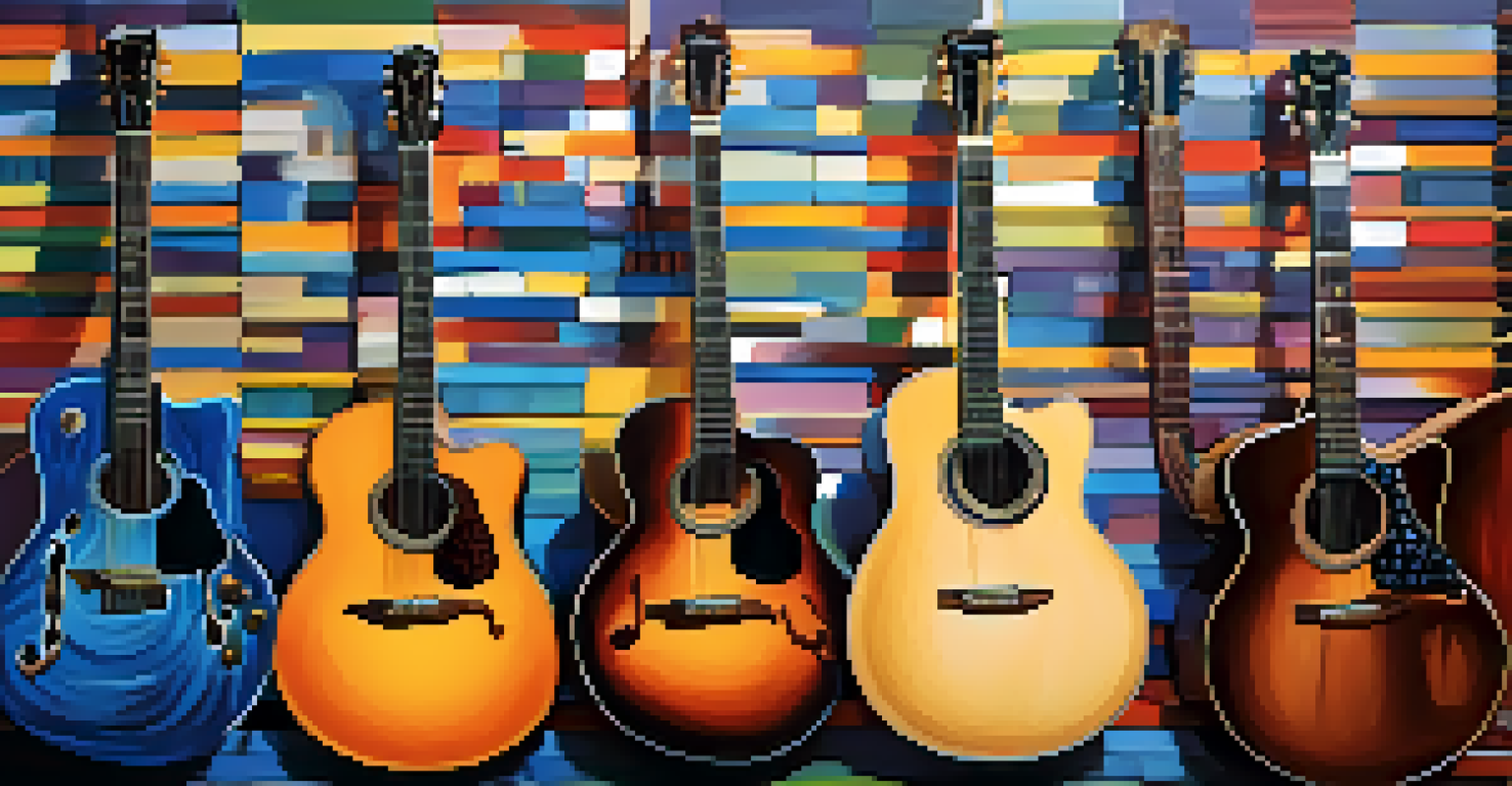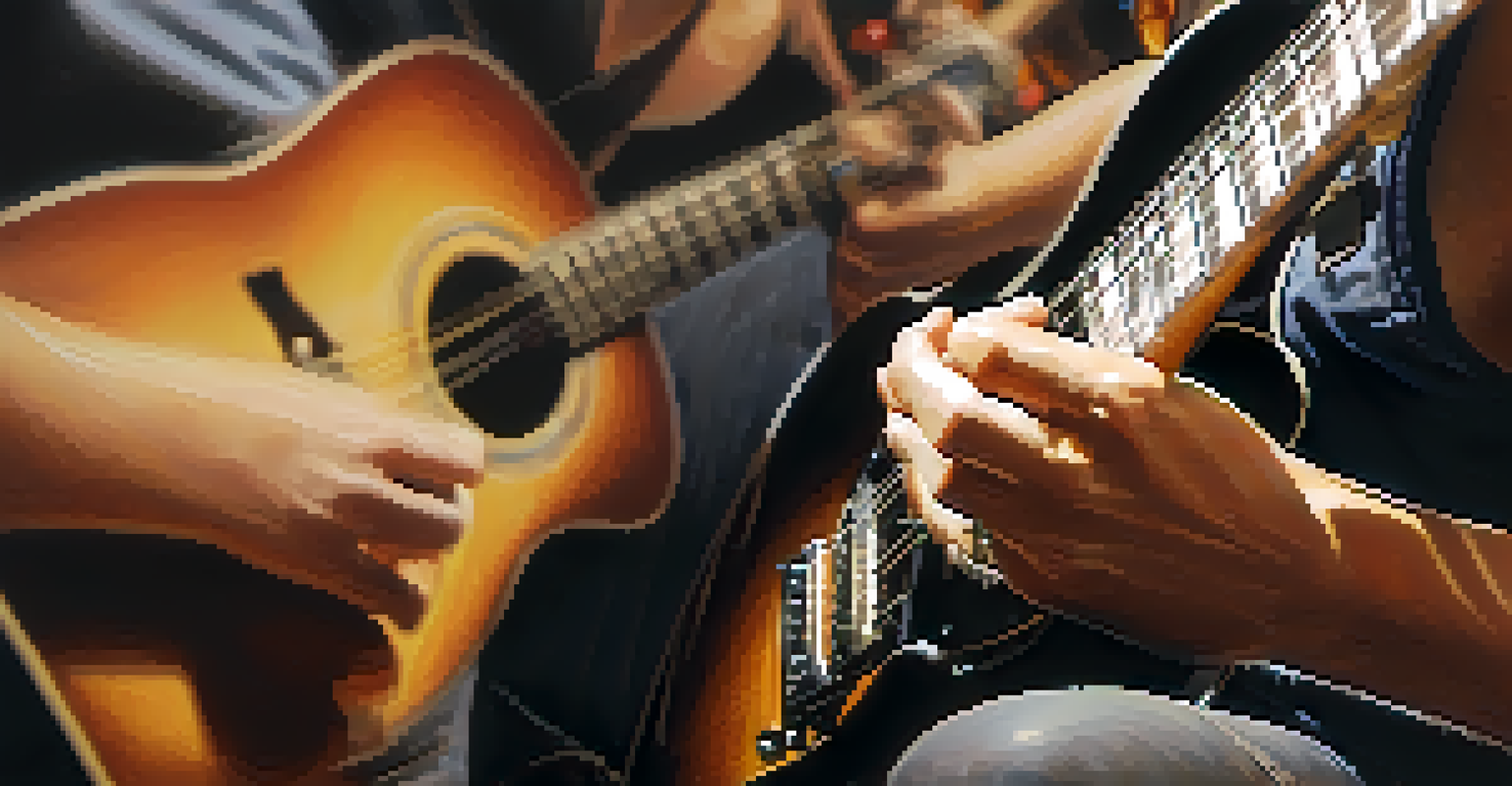Collaborative Songwriting: Combining Guitar Styles with Others

Understanding the Basics of Collaborative Songwriting
Collaborative songwriting is the process where multiple musicians come together to create a song. This approach allows for a rich blend of ideas, styles, and influences, enhancing the final product. By pooling individual strengths, songwriters can achieve a sound that might not be possible alone, making collaboration an exciting adventure.
Alone we can do so little; together we can do so much.
Imagine a painter inviting friends to contribute to their canvas. Each brushstroke adds depth and character, just like how different guitar styles can bring unique flavors to a song. From folk to rock, each genre offers its own palette of sounds, and when combined, they can create something truly special.
In the world of music, collaboration can lead to unexpected discoveries. By working together, songwriters can explore new perspectives, challenge each other's ideas, and ultimately craft a song that resonates on multiple levels. The beauty lies in the journey of creation, where each participant leaves their mark.
Exploring Different Guitar Styles: A Primer
Before diving into collaboration, it's essential to understand the various guitar styles out there. From fingerstyle and strumming to slide and jazz, each technique has its roots and characteristics. For instance, fingerstyle can add intricate melodies, while strumming might provide a rhythmic backbone for a song.

Think of guitar styles as different languages. Just like learning a new language opens up communication channels, understanding various guitar techniques enhances your ability to collaborate. When you recognize the nuances of each style, you can seamlessly weave them together, creating a harmonious blend.
Collaboration Enriches Songwriting
Collaborative songwriting allows musicians to blend their unique styles, resulting in a richer and more diverse final product.
Moreover, each style brings its own emotional weight. A bluesy riff can evoke feelings of longing, while a bright pop chord progression might inspire joy. By knowing these styles, songwriters can deliberately choose elements that match the mood they wish to convey, enriching the songwriting experience.
Finding Common Ground: Establishing a Collaborative Vision
Before beginning a songwriting session, it’s crucial to establish a shared vision among collaborators. This vision acts as a guiding light, ensuring everyone is on the same page. A simple discussion about themes, emotions, and styles can help align everyone's expectations and desires.
Creativity is contagious, pass it on.
Consider it like planning a road trip. Each person has their preferences for destinations and routes, but discussing these ideas beforehand ensures a smooth journey. In songwriting, this common ground helps avoid misunderstandings and keeps the creative process flowing.
As you develop your vision, encourage open dialogue. This transparency fosters a comfortable environment where everyone feels valued, allowing for richer contributions. Remember, the goal is to blend styles, not to overshadow one another; collaboration thrives on mutual respect and shared enthusiasm.
Integrating Guitar Styles: Tips for Successful Collaboration
Once the vision is set, the real fun begins: integrating different guitar styles. This can be achieved by experimenting with various techniques, chords, and rhythms during jam sessions. Try layering a fingerstyle melody over a strummed chord progression to see how they interact.
Think of it like cooking a stew. Each ingredient brings its own flavor, and when combined, they create a delicious dish. Similarly, blending guitar styles can yield unexpected and exciting results. Don’t hesitate to play around and see what resonates with your group.
Understanding Guitar Styles Matters
Familiarity with various guitar techniques enhances collaboration, enabling songwriters to weave different styles into a cohesive sound.
Moreover, listen actively to your collaborators. Sometimes, a simple change in dynamics or a subtle shift in tempo can elevate a piece significantly. By being open to experimentation and embracing spontaneity, you’ll foster an environment ripe for creative breakthroughs.
Embracing Each Guitarist's Unique Style
One of the greatest strengths of collaborative songwriting is the unique contributions from each guitarist. Recognizing and embracing these distinct styles is essential for a successful collaboration. Each musician brings their voice, which can add depth and richness to the song.
Imagine a quilt made from different fabrics. Each patch tells a story, and together they create a beautiful design. In the same way, a song becomes vibrant when each guitarist’s style is woven into its fabric. Celebrate these differences and let them shine.
Encourage each musician to showcase their signature techniques and influences. This not only builds confidence but also helps create a more authentic piece of art. Remember, the goal is not to homogenize the sound but to embrace the diversity that each guitarist offers.
The Role of Feedback in Collaborative Songwriting
Feedback is a crucial element in the collaborative songwriting process. Constructive criticism helps refine ideas and ensures that everyone’s voice is heard. When giving feedback, focus on being honest yet respectful, aiming to elevate the project rather than diminish it.
Think of feedback as a sculptor chiseling away at a block of marble. Each suggestion helps reveal the masterpiece hidden within. By sharing thoughts on what works and what doesn’t, you can collectively shape the song into something truly special.
Feedback Fuels Creative Growth
Constructive feedback during collaboration helps refine ideas and strengthens the bond among musicians, leading to a better song.
Encourage a culture of openness where everyone feels comfortable sharing their opinions. This not only strengthens the bond among collaborators but also fosters a creative environment where growth is possible. Remember, every piece of feedback is a stepping stone toward crafting a better song.
Finalizing the Song: Bringing It All Together
As the songwriting process winds down, it’s time to bring all elements together into a final piece. This stage involves refining melodies, harmonizing guitar parts, and ensuring that each style is represented harmoniously. It’s a bit like assembling a puzzle where all the pieces need to fit perfectly.
Take the time to revisit your original vision and ensure the final product aligns with it. This is an opportunity to assess if the blend of styles works cohesively or if adjustments are needed. Each collaborator should feel satisfied with the final result, as it reflects their collective effort.

Lastly, don’t forget to celebrate your achievement! Whether it's a small gathering or a casual jam session, recognizing the hard work put into the song creates a sense of fulfillment. Collaborative songwriting is not just about the end product; it's about the journey and the connections forged along the way.